A Rolex Day-Date In Yellow Gold, With Carnelian Dial
A modern Day-Date with old-school appeal.
A Watch A Week has been on something of a complications binge lately and you would think looking over the last few weeks, that we never met a tourbillon or a perpetual calendar (or both in the same watch) that we didn’t like. While it is true that the technical and historical (and artistic) aspects of high complications can be endlessly thought provoking and even moving, it is also true that occasionally what one wants, is a sort of horological palate cleanser – something that is a reminder that while the austere joys of mechanical complexity can be richly rewarding, there is nothing wrong with occasionally having some good, clean, unabashedly luxurious fun. For me, the last word in horological fun – pure hedonism, the guiltiest of pleasures, no holds barred cost-be-damned self-indulgence – is, was, and probably will forever be, the Rolex Day-Date – specifically, in yellow gold and that classic 36mm diameter.
There are several reasons why (including the fact that a yellow gold Day-Date is the first watch I can ever remember seeing, and wishing I could own) but the reasons for the Day-Date’s appeal are probably as varied as the people who wear them. Still, there is the undeniable fact that wearing one is not just making a statement – it is also making a statement about making a statement. It’s probably the single most recognized and recognizable luxury watch on Earth (and I mean broadly speaking, I don’t mean the extremely small cohort of people who have been exposed to Richard Mille, for instance) and wearing one has historically been an all-frequencies broadcast that you are a person of consequence. Yellow gold is an essential part of the equation, if you ask me – gold as humankind first knew it and loved it; heavy, malleable, lustrous, and yellow as butter or a summer sun.
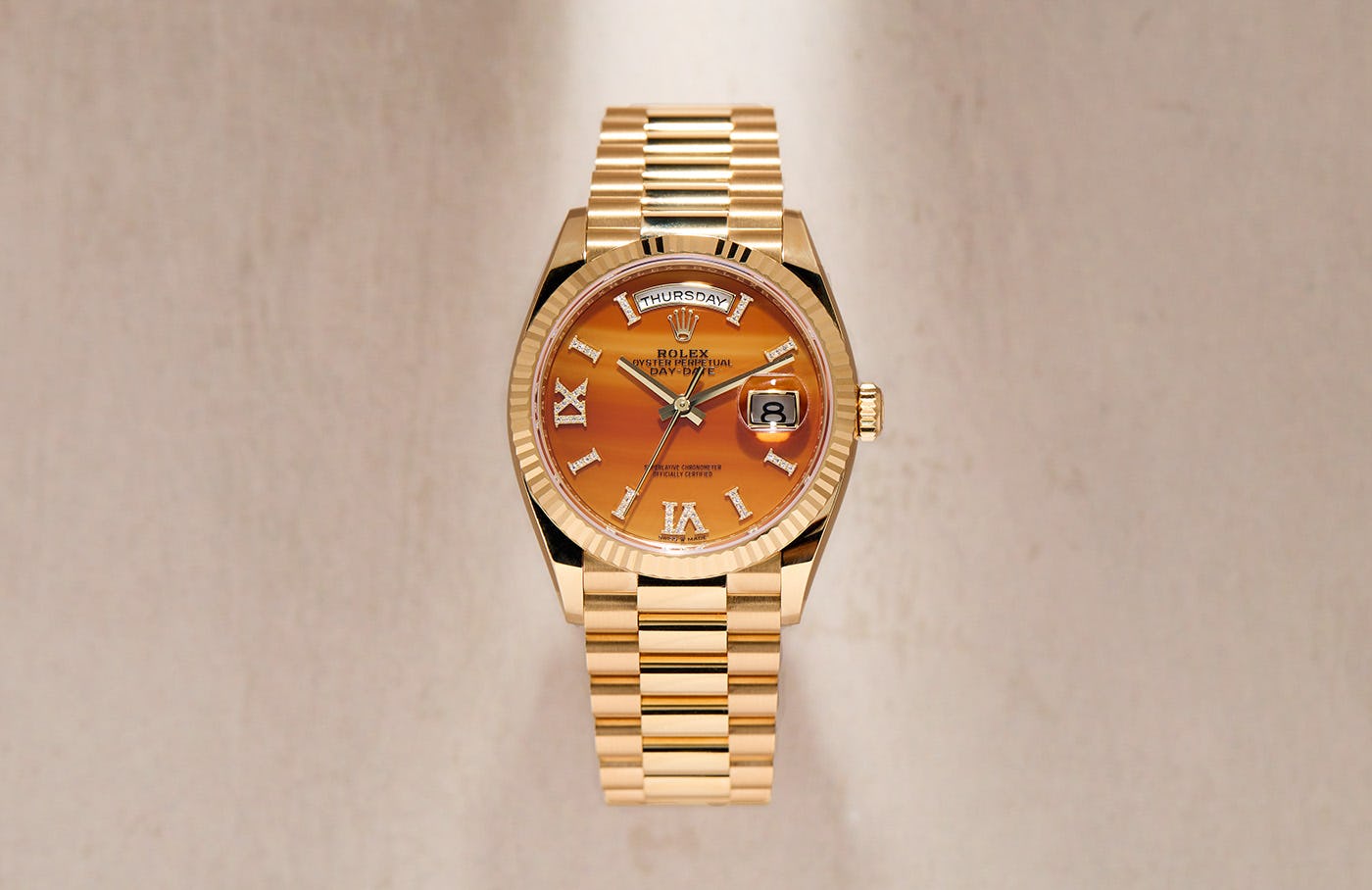
This particular Rolex Day-Date is of very recent production – this year, in fact; it was one of the models released at Watches & Wonders. It is, in many respects, an absolutely classic piece of work – part of the joy of a Day-Date is that it has changed very little over the years and you feel part of a very long and illustrious history when you put one on. Functionally, of course, the Day-Date is largely unchanged over the decades (the last big update, at least from a user interface standpoint, was the addition of a quickset mechanism for the date in 1977, and for both the day and the date in 1988. Of course, the movements have gotten some significant upgrades and updates over the years, but let’s be frank, we’re not here for the movement, except insofar as we assume that the watch will do what it’s supposed to do, Superlative Chronometer rating and all, without fail. It has, however, something which places it in a special category of Rolex watches – those that were made with dials cut from semi-precious stones.
One of the great things about writing about watches is that no matter how much you know, there’s always something you didn’t; every day is a school day. I was surprised to find, never having looked terribly closely at this particular corner of Rolex and other watchmaking, that making watches with dials cut from valuable minerals came along pretty recently. The basic problem is that you need some very specialized high speed cutting tools that work to very high precision, in order to cut wafers from stone which are thin enough to use as dials, but which don’t break on you halfway through the cutting process. A stone dial pocket watch could have been made by, say, Patek or Vacheron or Breguet back in the 19th century but such dials would have added a lot of weight and made watches more cumbersome at the exact time in horological history when ultra-thin watchmaking was really taking hold, and slimness in general was a virtue in all watchmaking.
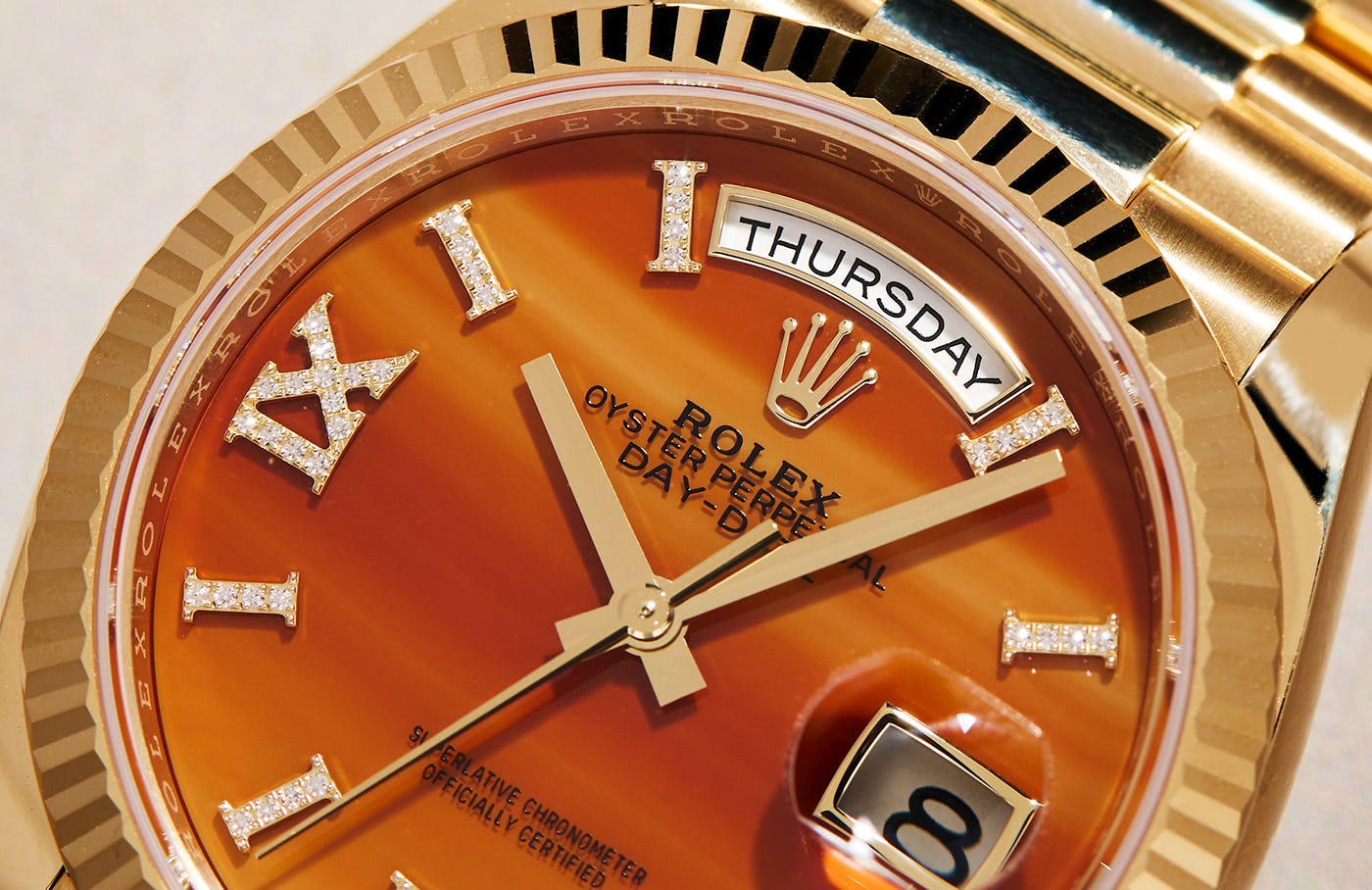
As it happens, it wasn’t until the 1960s that a couple of things happened to make stone dials plausible in production watches. The first was a general loosening up of sartorial tastes and a corresponding willingness to consider more extroverted watch designs. The second was that it had become technically possible to make stone dials with something less than 100% loss during manufacturing. The first to market as far as I can tell, was Piaget, who introduced their first semiprecious stone dial watches in 1963. Rolex is maybe more famous for a very different kind of mineral dial – those made from meteorites – but the company began offering watches with stone dials in the 1970s and, as a dial options list from the era shows, there were dozens upon dozens of possibilities and permutations.
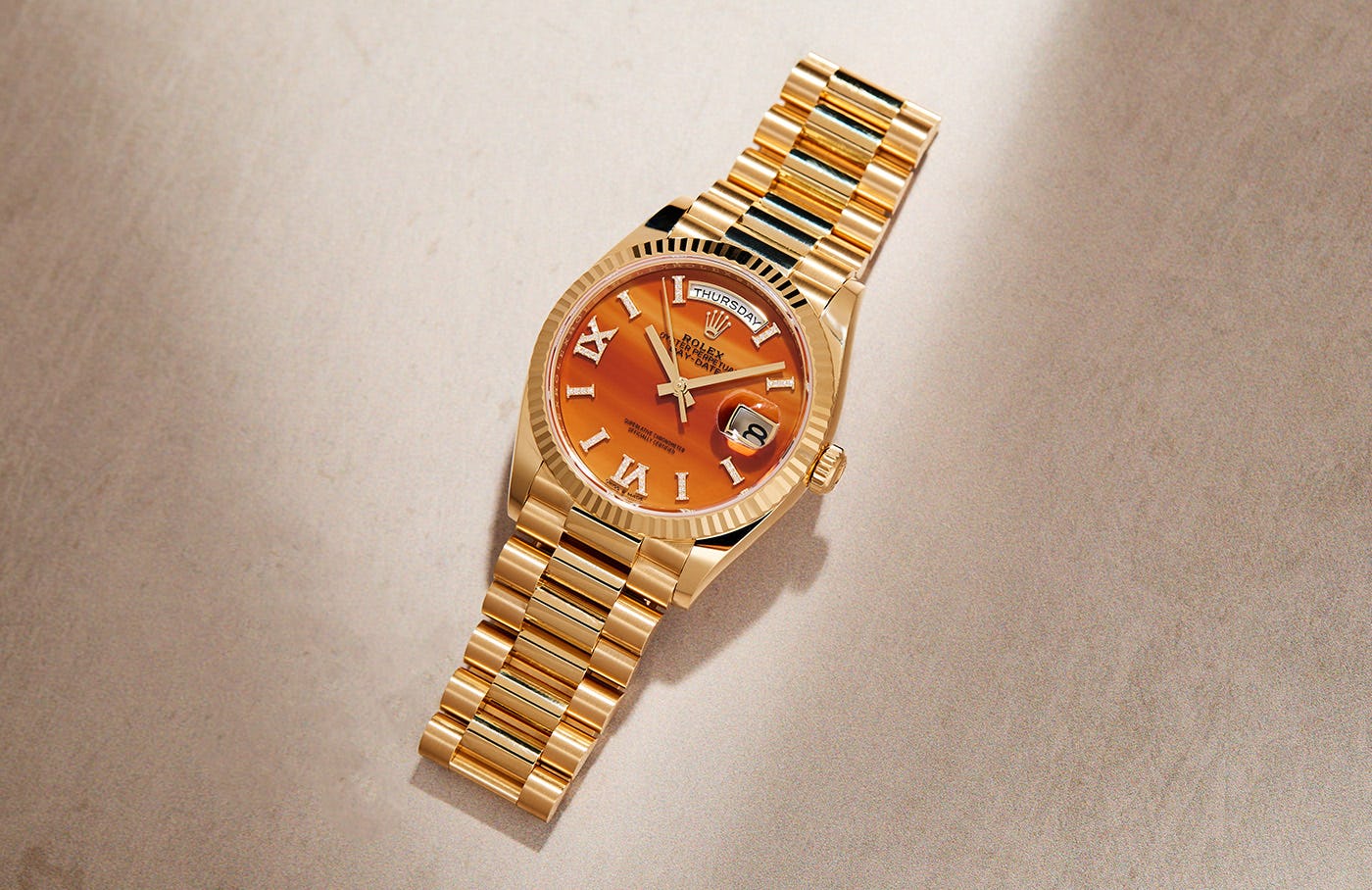
One of those options was “cornelian” which is usually spelled “carnelian” nowadays; they mean the same mineral, however. Carnelian is a variety of chalcedony, which is in turn a variety of silica (silicon dioxide) and it’s a very, very old semi-precious stone in human history. Its warmth seems to have attracted the eye of humans as far back as the Neolithic, and it has been valued and used as the centerpiece of jewelry and other personal adornments ever since. It is relatively easy to work (the Neolithic people who used it made beads out of it, pierced with bow drills) and one of its most widespread uses was in signet rings, as wax doesn’t stick to it. Carnelian has the warm glow of a living body, which seems to have given it associations of vitality, health, and general good luck.

Making a cornelian dial is a complicated process, involving several different steps, including cutting the wafer, polishing it, and adhering it to a very thin metal substrate in order to strengthen it. You can get a sense of the thickness of the dial, in a stone dial Day-Date, from the depth of the apertures for the day and the date. In general, as they come from Rolex, stone dial watches do not have lume on the hands or dial markers, although I have seen stone dial Rolex watches that do have luminous hands – possibly a later addition during service, or added at a client’s request when the watch was ordered.

One of the best features of any modern Day-Date – or really, any modern Rolex – is the bracelet. I’ve worn a modern 36mm Day-Date for review purposes and while the visual (and social) impact of the watch is probably paramount in terms of the wearing experience, the fact that the bracelet is unbelievably comfortable is nothing to sneeze at. Even at 36mm there is quite a bit of gold and therefore, quite a bit of heft (at least for its size) to the watch, and the bracelet not only helps create a more balanced feeling on the wrist, it also adds considerably to the physical presence of all that gold.
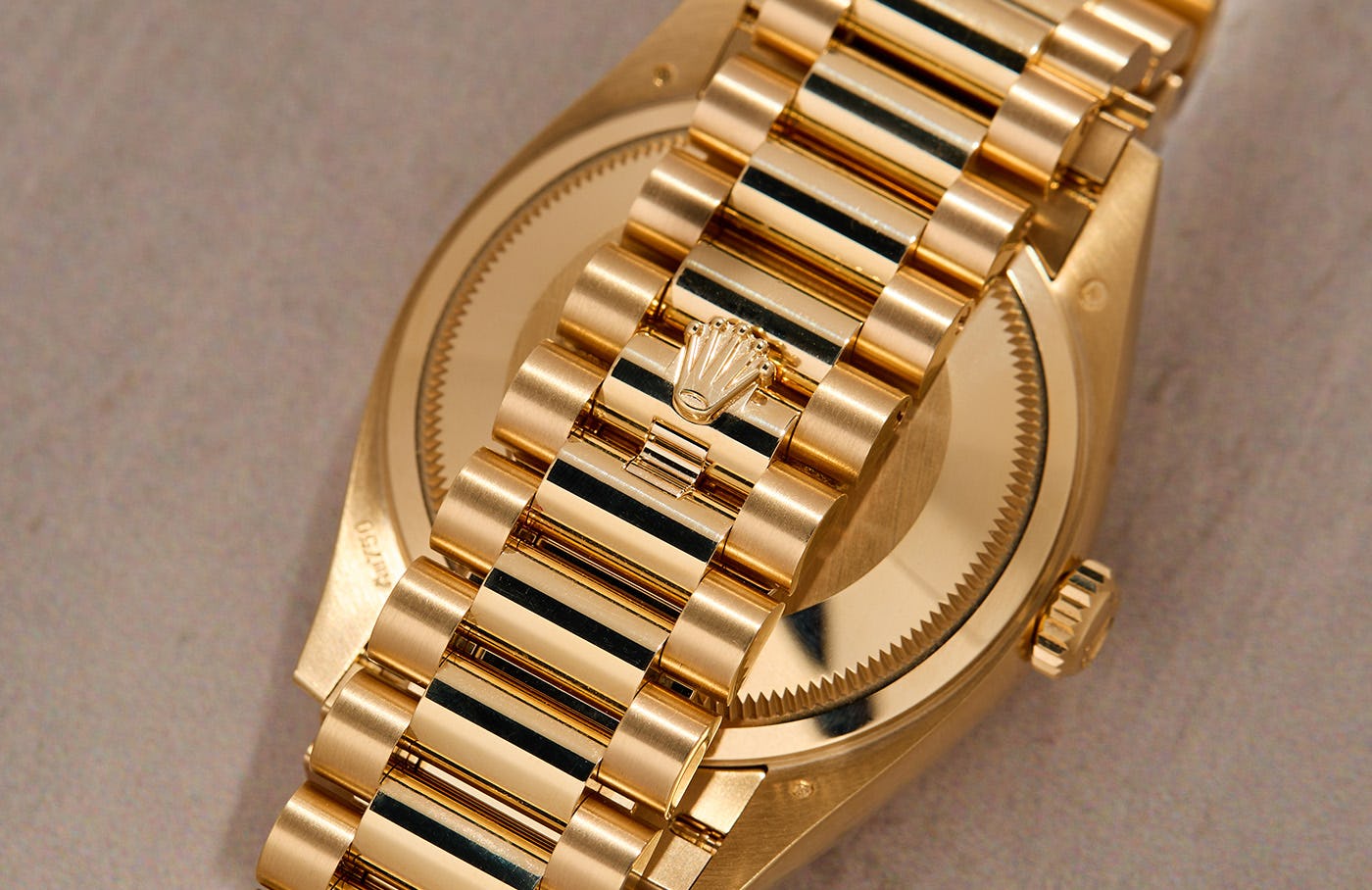
There is a beautiful depth to the dial and the use of carnelian, especially, is I think a wonderful way of making what already seemed like a watch that is as luxurious as it gets, even more luxurious. Nowadays, our idea of what instantly conveys prestige in a watch has changed thanks to the rise of social media and the ability to flex in front of up to millions of people at the same time, and you can get more mileage in terms of perceived prestige out of a watch with, say, a composite case (Richard Mille) or the right watch in steel (examples will occur to the reader too numerous to mention).
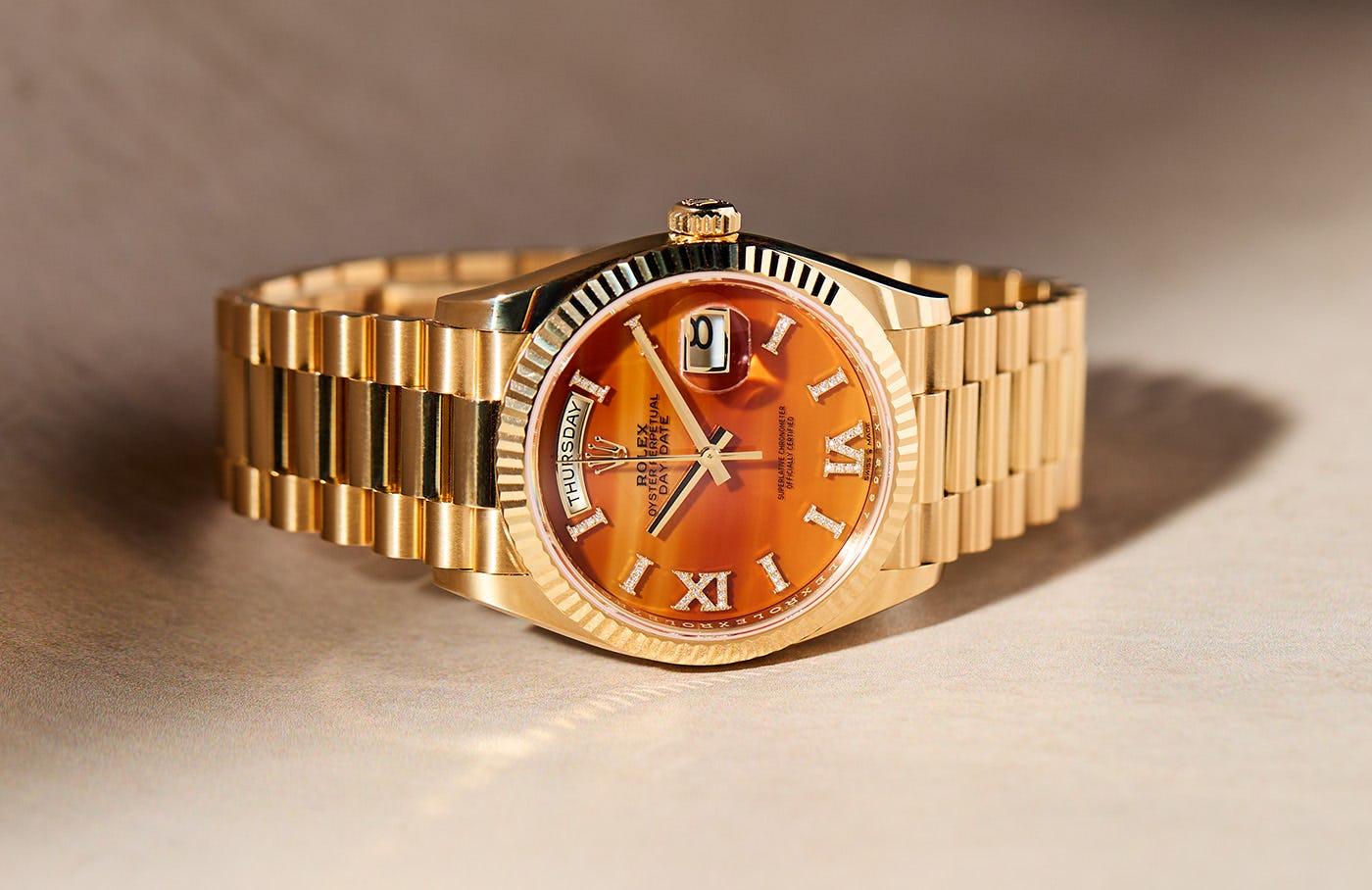
The Day-Date still retains its symbolic power, though. Especially in yellow gold, it can seem like something of an old-fashioned watch, but I think of it less as old fashioned, as old school, in its appeal to both the history of the model (the Day-Date’s nickname, the “President” is probably better known to the general public than “Day-Date”) and to a different notion of what luxury means in the context of fine watchmaking. With the carnelian dial, this is I think an unquestionably beautiful watch – and it’s also a connection, as so many classic Rolex models are, to a kind of purity of purpose that makes it, to this day, one of the quintessential luxury watches of all time.











